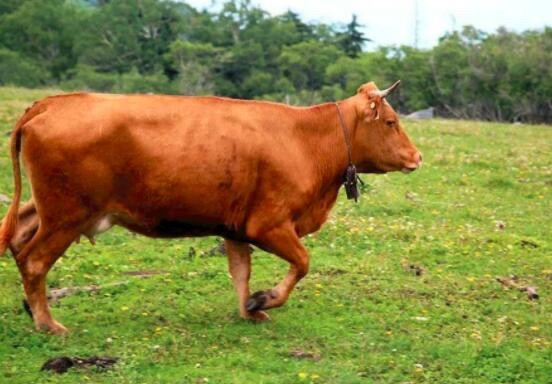
News briefing:

News briefing:
Cattle farm efficiency method and disease prevention technology
How to feed beef cattle can make the beef cattle grow faster? This is also a problem that many breeding friends are concerned about. Based on years of breeding experience, I now give you the following breeding suggestions.
(1) House-fed beef cattle are generally fed twice a day, which is convenient for arrangement and management, but studies have shown that increasing the number of feedings and prolonging the feeding time can increase the fat thickness of the ketone body of the beef cattle, increase the weight of the whole body, and reduce the lean meat of the ketone body. content.
(2) Add a certain amount of enzymes to the beef cattle diet. For example, ligninase or cellulase, no matter what kind of concentrate is fed to beef cattle, the flavor of beef cattle is slightly improved
(3) Poultry manure has a high protein content. After drying and disinfection, it can be used as feed for beef cattle.
(4) Rumenin is a commonly used feed additive for beef cattle. Supplementing 300KG per cow per day can regulate rumen fermentation and improve feed utilization. Since the rumen is not digested and absorbed, there is no residue in the beef cattle, and it has no effect on the quality of the beef cattle.
(5) Barley and corn are the two main feeds for beef cattle. Under the same conditions as other feeds, barley fed has a slightly better flavor than corn fed beef cattle. However, this difference is small and has no obvious impact on consumer choice. The choice of feed is still based on local resources.
There are mainly suitable feed preparations. In a sense, solving the feed problem is equal to more than half of the successful breeding, and a balanced diet is the fundamental solution to the feed problem.
Disease prevention technology for cattle farms
1. The site selection and layout of cattle farms should be conducive to epidemic prevention. The cattle farm should choose a high dry, flat, and wide place, and the location should be 1,000 meters away from traffic arteries, hospitals, factories, and residential areas. Cattle farms should be fenced, production areas, offices, and living areas should be separated, and disinfection pools should be set up at the entrance of each area. Manure storage yards, sick cow houses, and veterinary rooms should be located 200 meters away from the cow house in a remote place with a downwind direction to facilitate epidemic prevention and environmental sanitation.
2. Establish a disinfection system.
No foreign visitors are allowed to visit and enter the venue. High-concentration disinfectant should be kept in the disinfection tank at the entrance of the cattle farm and at the entrance of each area, and should be replaced frequently. Workers entering the production area must change their clothes, hats, and shoes. They can only enter the site after 15 minutes of ultraviolet disinfection. All staff and vehicles on the site must pass through the disinfection pool. The cattle farm should be kept clean and hygienic frequently, without peculiar smell and ammonia gas, and ensure good ventilation. Disinfect once every 15 days. The cattle trough and utensils should be brushed and disinfected frequently. Dogs, cats, chickens, ducks and other livestock and poultry are prohibited in the cattle farm.
3. Formulate a systematic quarantine, epidemic prevention, and deworming system.
⑴ Quarantine: The cattle must be purchased from the non-epidemic area. The cattle must be quarantined by the local quarantine department, and the quarantine certificate must be issued. The vehicle and carcass must be disinfected before entering the cattle farm. After 15 days of observation in the isolation house, it was confirmed that they were healthy and disease-free and then fed in groups.
⑵According to cattle immunization procedures, immunize reasonably and accurately.
⑶ Deworming. Combining local actual conditions, carry out deworming in a reasonable and timely manner. Generally, whole group deworming is performed once in spring and autumn. Commonly used anthelmintic drugs are abamectin or ivermectin powder injections, and they are fed or injected according to instructions.
4. Harmless treatment of feces and dirt.
Cow feces and dirt contain a large number of bacteria and insect eggs, which are the main cause of various infectious diseases and parasitic diseases. Therefore, feces and dirt should be concentrated and added with disinfectant to pile up and ferment, and the pathogenic microorganisms and insects should be killed by high temperature. Eggs, in order to effectively prevent the occurrence of various infectious diseases and parasitic diseases.
5. Anti-rat, anti-mosquito and fly.
Blood-sucking insects such as mosquitoes and flies are the vectors of infectious diseases. Therefore, the cow house should be sprayed weekly with Weihujing drugs to eliminate mosquitoes and flies, eliminate mice, cut off the transmission route, and ensure the normal growth of the cattle herd.
Doing the above-mentioned disease prevention measures in cattle farms can prevent most of the diseases of beef cattle. I hope that the knowledge of Dahan cattle breeding base can help everyone to better raise beef cattle!
Date of opening:1970-01-01 Shop address: Main products: Store certification time:1970-01-01 08:00:00
Store Name: Principal: Contact number: email: